Hot Spots. Rio de Janeiro / Milano–Torino / Los Angeles, 1956–1969
13.02.2009 – 03.05.2009
Curated by Tobia Bezzola.
Location Pfister-Bau (Grosser Ausstellungssaal, ehem. Bührlesaal).
Curated by Tobia Bezzola.
Location Pfister-Bau (Grosser Ausstellungssaal, ehem. Bührlesaal).
New Locations for Art in the Globalized Post-War World
After World War II the art world was transformed: Paris and New York lost their previously unquestioned dominant status and new hotspots came into being, such as Rio de Janeiro, Milan, Turin and Los Angeles. Under the heading Hot Spots this was thematized in the Kunsthaus with big names from art, photography, architecture and design like Lucio Fontana, Ed Ruscha and Hélio Oiticia. Sadly, woman artists were dramatically in the minority: Lygia Clark (Brazil), Marisa Merz and Carol Rama (Italy) along with Vija Celmins and Judy Chicago (USA) were the few exceptions.
The show, curated by Tobia Bezzola, combined three solo exhibitions from Stockholm’s Moderna Museet in 2008. The exhibition’s thesis was that every hotspot deserved its successes, which distinguished the current avantgarde from the art of its fathers. For Rio this meant overcoming the geometric space in society and performance. Even in 1951 the concrete Max Bill had still exercised considerable influence on the Brazilian art scene. The leap into new dimensions helped the Brazilian ‘Neoconcretism’ to achieve success; it was seen to be as sexy as the Bossa Nova and Cinema Novo.
For Italy it was the abandonment of the traditional picture space and its spatialization (Lucia Fontana) overcoming the classical concept of a work (Piero Manzoni with his merda d’artista^^ (Artist’s Shit, to be sold at the daily price of gold). In Northern Italy art was totally redefined by Germano Celant in 1967 with the so-called Arte Povera: New, ‘poor’ materials, close attention to the importance of the creative process, as well as a higher to utopian view of what art can achieve socially shifted into the center of interest.
In Los Angeles in turn, the concern was dealing with popular culture, as for example with Ed Ruscha, (b. 1937 in Omaha) and David Hockney (b. 1937 in Bradford GB), but also with dematerialization, as with James Turrell (b. 1943 in Los Angeles) with his work made of light, or the breakup of interior and exterior in the architecture of Pierre Koenig. That there was no clear categorization for this, of the kind produced by the New York art industry with ‘Minimal’ or Pop,’ according to Lars Nittve, is characteristic of the individualist art and lifestyle plans of Los Angeles.
Resonance in the press was widespread and positive. Only Samuel Herzog saw things a bit more critically: ‘In many cases we are rather perplexed—the range is too open, too much a matter of form, or of design’ (NZZ). With the exhibition, a catalogue volume was published by Verlag Steidl, Göttingen.
[Peter Stohler]
The exhibition’s thesis was that every hotspot deserved its successes, which distinguished the current avantgarde from the art of its fathers.

1/10
exhibition poster
Design: Megi Zumstein / Hi Visuelle Gestaltung Zumstein & Barandun, Luzern / Photo: Julius Schulman
Design: Megi Zumstein / Hi Visuelle Gestaltung Zumstein & Barandun, Luzern / Photo: Julius Schulman
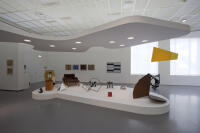
2/10
exhibition view
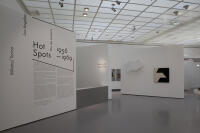
3/10
exhibition view
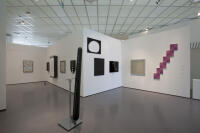
4/10
exhibition view
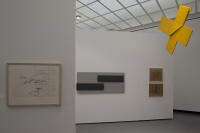
5/10
exhibition view
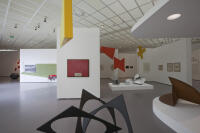
6/10
exhibition view
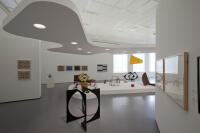
7/10
exhibition view
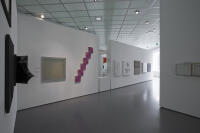
8/10
exhibition view
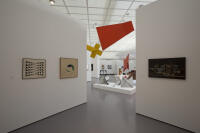
9/10
exhibition view
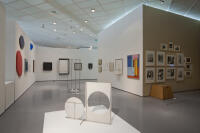
10/10
exhibition view
1/10